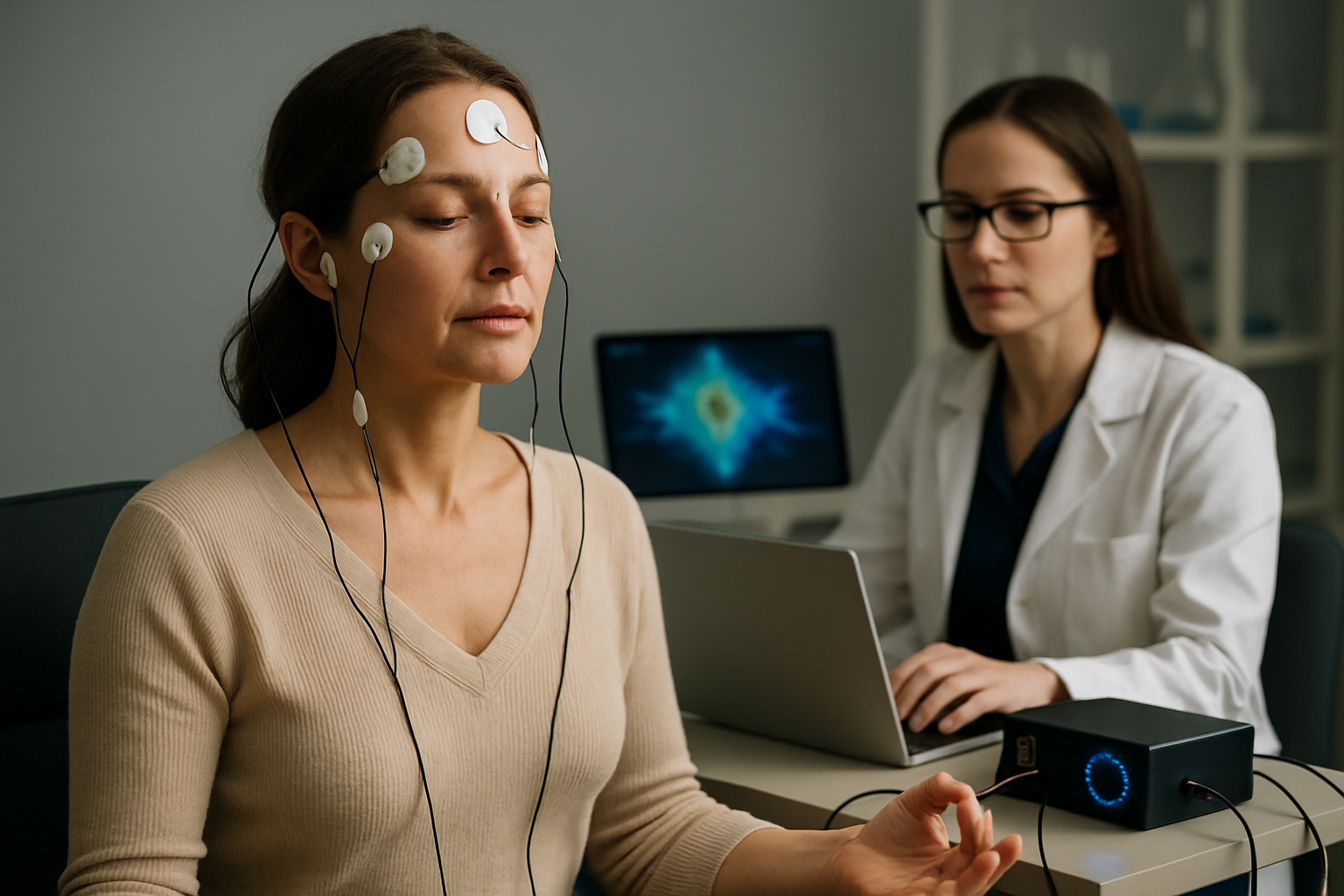Neurofeedback: Tuning Your Brain for Peak Performance
Can you imagine a world where you could fine-tune your brain like a musical instrument, adjusting its rhythms and harmonies for optimal performance? Welcome to the fascinating realm of neurofeedback, a cutting-edge technique that's revolutionizing our approach to mental wellness and cognitive enhancement. This groundbreaking method allows individuals to observe their brain activity in real-time and learn to modulate it, opening up new frontiers in personal growth and mental health.

The concept dates back to the 1960s when researchers discovered that people could learn to alter their brain waves when given real-time information about their neural activity. Since then, neurofeedback has evolved significantly, incorporating advanced technologies and expanding its applications across various fields.
How Neurofeedback Works
During a neurofeedback session, sensors are placed on the scalp to measure electrical activity in different brain regions. This activity is then translated into a visual or auditory representation, often in the form of a game or animation. As the individual watches or listens, they learn to produce more of the desired brain wave patterns and less of the undesired ones.
The process is non-invasive and painless, making it an attractive option for those seeking alternative methods to improve mental function. Over time, with repeated sessions, the brain learns to maintain these optimized patterns even without the feedback, leading to lasting changes in cognitive function and emotional regulation.
Applications in Mental Health and Performance
Neurofeedback has shown promise in treating a wide range of conditions, from attention deficit hyperactivity disorder (ADHD) to anxiety and depression. For individuals with ADHD, neurofeedback training can help increase focus and reduce impulsivity by teaching the brain to produce more beta waves associated with attention and fewer theta waves linked to daydreaming.
In the realm of anxiety and depression, neurofeedback aims to balance alpha and beta wave activity, promoting a state of calm alertness. Some studies have reported significant reductions in anxiety symptoms and improvements in mood following neurofeedback training.
Beyond clinical applications, neurofeedback is gaining traction in performance enhancement. Athletes, executives, and artists are turning to this technique to sharpen their mental acuity, improve focus, and manage stress more effectively. By learning to access optimal brain states at will, individuals can potentially unlock new levels of creativity, decision-making, and overall cognitive performance.
The Future of Brain Training
As technology advances, the future of neurofeedback looks increasingly promising. Researchers are exploring the integration of neurofeedback with virtual reality, creating immersive environments for more engaging and effective training. Additionally, the development of portable EEG devices is making neurofeedback more accessible, allowing users to practice at home or on the go.
One exciting area of research is the combination of neurofeedback with artificial intelligence. AI algorithms could potentially analyze brain wave patterns more comprehensively, tailoring training programs to individual needs with unprecedented precision. This personalized approach could significantly enhance the efficacy of neurofeedback across various applications.
Challenges and Considerations
While neurofeedback shows great promise, it’s important to approach it with a critical eye. The field is still evolving, and more rigorous research is needed to fully understand its long-term effects and optimal protocols. Some skeptics argue that the observed benefits may be due to placebo effects or general relaxation rather than specific changes in brain function.
Moreover, the quality of neurofeedback training can vary widely depending on the practitioner’s expertise and the equipment used. It’s crucial for individuals interested in neurofeedback to seek out qualified professionals and reputable clinics to ensure safe and effective treatment.
Brainwave Basics: Understanding Your Mental Rhythms
-
Delta waves (0.5-4 Hz): Associated with deep sleep and regeneration
-
Theta waves (4-8 Hz): Linked to creativity, intuition, and light sleep
-
Alpha waves (8-12 Hz): Indicate relaxation and mental coordination
-
Beta waves (12-30 Hz): Present during active thinking and focus
-
Gamma waves (30-100 Hz): Related to high-level information processing
As we continue to unravel the mysteries of the brain, neurofeedback stands out as a powerful tool for harnessing our cognitive potential. By providing a window into our neural activity and a means to influence it, this technique offers a unique pathway to mental wellness and peak performance. While it’s not a panacea, neurofeedback represents an exciting frontier in our quest for self-improvement and optimal brain function. As research progresses and technology evolves, we may find ourselves on the cusp of a new era in brain training, where fine-tuning our mental faculties becomes as commonplace as physical exercise.





